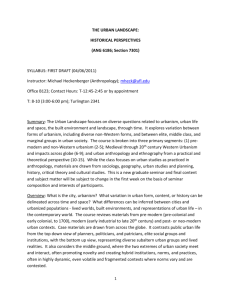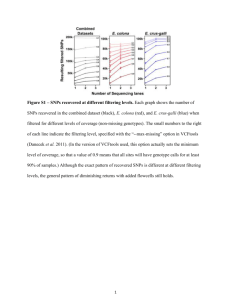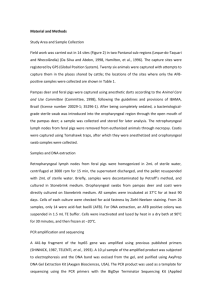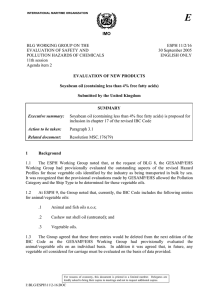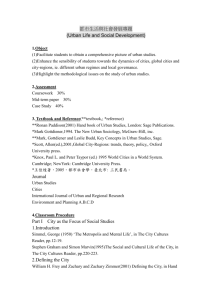tpj12755-sup-0008-Legends
advertisement
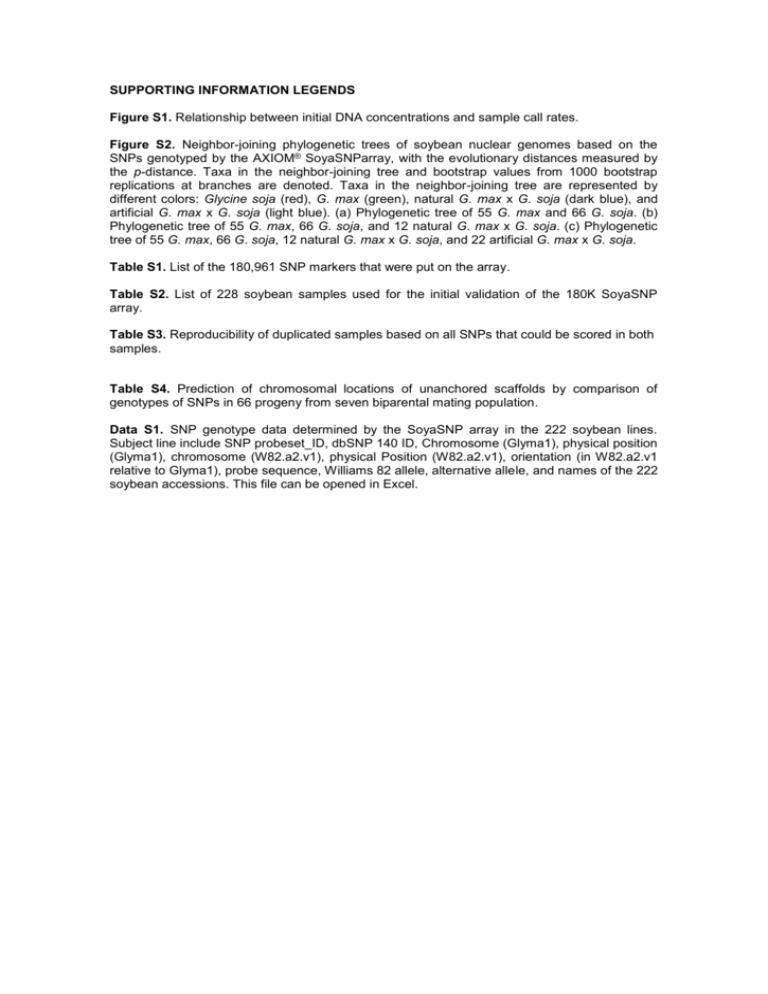
SUPPORTING INFORMATION LEGENDS Figure S1. Relationship between initial DNA concentrations and sample call rates. Figure S2. Neighbor-joining phylogenetic trees of soybean nuclear genomes based on the SNPs genotyped by the AXIOM® SoyaSNParray, with the evolutionary distances measured by the p-distance. Taxa in the neighbor-joining tree and bootstrap values from 1000 bootstrap replications at branches are denoted. Taxa in the neighbor-joining tree are represented by different colors: Glycine soja (red), G. max (green), natural G. max x G. soja (dark blue), and artificial G. max x G. soja (light blue). (a) Phylogenetic tree of 55 G. max and 66 G. soja. (b) Phylogenetic tree of 55 G. max, 66 G. soja, and 12 natural G. max x G. soja. (c) Phylogenetic tree of 55 G. max, 66 G. soja, 12 natural G. max x G. soja, and 22 artificial G. max x G. soja. Table S1. List of the 180,961 SNP markers that were put on the array. Table S2. List of 228 soybean samples used for the initial validation of the 180K SoyaSNP array. Table S3. Reproducibility of duplicated samples based on all SNPs that could be scored in both samples. Table S4. Prediction of chromosomal locations of unanchored scaffolds by comparison of genotypes of SNPs in 66 progeny from seven biparental mating population. Data S1. SNP genotype data determined by the SoyaSNP array in the 222 soybean lines. Subject line include SNP probeset_ID, dbSNP 140 ID, Chromosome (Glyma1), physical position (Glyma1), chromosome (W82.a2.v1), physical Position (W82.a2.v1), orientation (in W82.a2.v1 relative to Glyma1), probe sequence, Williams 82 allele, alternative allele, and names of the 222 soybean accessions. This file can be opened in Excel.


